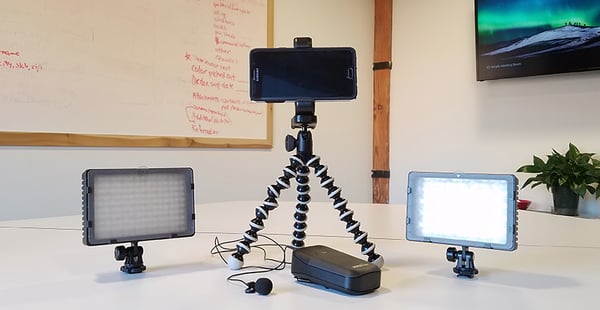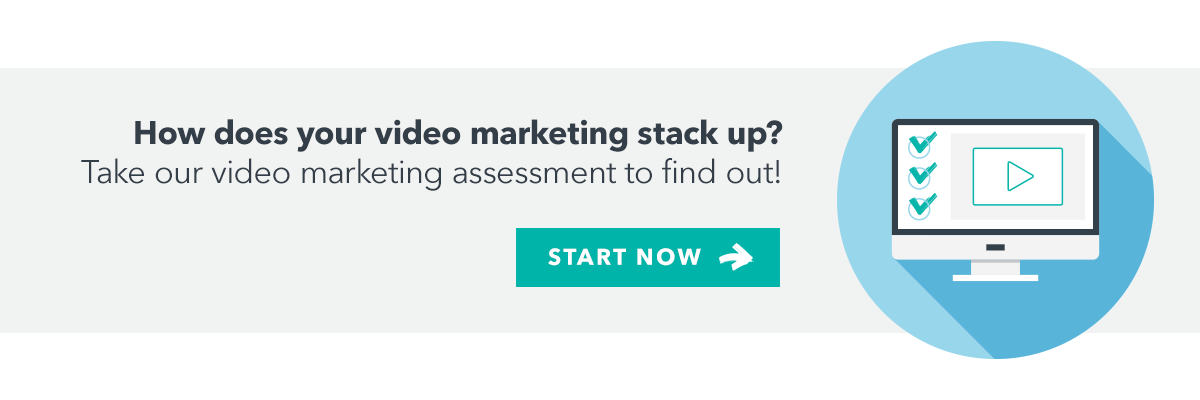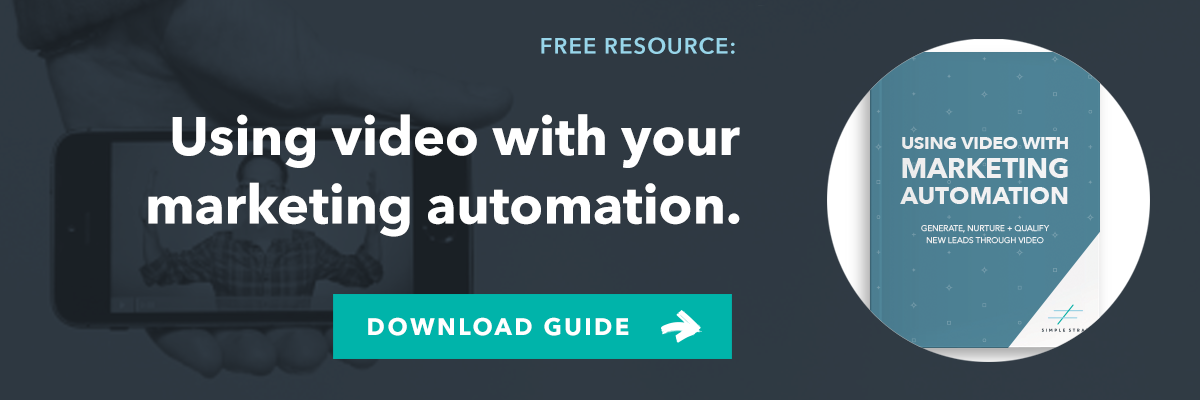Are you sending videos to your prospects? Not those sexy videos that your marketing team or ad agency put together, we’re talking about raw, real videos of you talking on camera.
If you are, you’re way ahead of most salespeople out there – and your commissions probably reflect that. If you’re not, don’t worry. There’s still time to add video to your sales process, but not much. Video isn’t the future of sales, it’s the present.
Buyers today want information, authenticity, and flexibility. And you’re already aware that they must know you, like you, and trust you before they’ll buy from you. But giving them what they want and building that relationship is harder than ever - unless you use video.
So, when exactly should you use video? How do you do it? What if you’re terrible on camera? By the end of this article, we’ll answer these questions and give you everything you need to get started. If you’re already using video, look over this article to make sure you’re not missing anything or just skip to the bottom where we’ve got some great pro tips to help you level up.
Where and When to Use Video
Email Signatures
Email is an awesomely easy way to communicate, but it’s super hard to create a real relationship via email. How many times have you met someone you had exchanged emails with, only to realize they were completely different than what you imagined?
Adding a video to your email signature is a great way to bring in a personal touch and let people get to know you a bit better. It can be as simple as adding a link below your name that says, “Get to know me better.” Connect that link up to a short YouTube video of you introducing yourself.
The level of production quality and formality for these videos should depend on your audience. But as a general rule of thumb, these videos should be fairly raw and personal. Remember the point is to help build relationships, so we want these to feel authentic. Here’s an example of the video our founder uses:
Follow-ups
Let’s say you work for a software company and you just met a prospective client at a conference. Instead of taking their business card and then leaving them a voicemail, or sending them a traditional follow-up message, you could send a video instead.
Maybe there are some little-known hacks or time-saving tricks that people don’t know about with your software. Using a tool like Soapbox or Screenflow, or any other screen casting tool, you could record a video showing off some of these time saving tricks in addition to a “nice to meet you” message.
These videos should be short and sweet. They’re designed to help your prospect remember who you are, and to make you stand out from the competition by delivering value right away. Try to make sure your video helps them in some way – through a tip like the example above, directing them to more information about something you discussed, or maybe a trend you’re seeing in the industry.
FAQs
This is where video really starts saving you time in the sales process. As salespeople, we get asked the same questions over and over again. Create short video responses to those questions, and you can use them whenever that question comes up. This will free you up from writing the same email answer every day, while also making your responses feel more personal because they get to see your face and hear your voice.
Here's an example of how video really helped me answer a question that would've been much more difficult to answer with text. This video is about a minute long and took me about two minutes to make using a free tool called Loom.
Check-Ins
We’ve all had prospects that fall off the face of the earth after what seemed like a great meeting or that just keep pushing back a decision every time you talk to them. For those people, the overused “just checking in” email almost never works.
To get them to take action, you need something that stands out. Try replacing that email with a short, customized video you shoot on your smartphone. Reference past conversations and try to give them something valuable like a tip or industry insight.
When they see that you took the time to make a video and that you’re really just there to help, they’re much more likely to take the time to respond. Plus, I can promise you that almost none of your competition is doing this, giving you a great opportunity to stand out.
Proposals
If there’s one thing that’s consistent about sales, it’s that you’ll need a proposal or estimate to present at some point in the journey. When yours is one of many proposals on their desk, you run the risk of blending in. Differentiate yourself with a video to accompany your proposal.
As a bonus, if you utilize an online proposal building tool such as PandaDoc or Proposify, you could embed your video right into the proposal and see if, when, and how many times they clicked through to the video (cool and creepy, right?).
Proposal videos should have a little more polish than some of the others we talked about, and they should always be customized to the proposal you’re sending and the person or people you’re sending it to. Focus on why you or your team would be a great fit for the prospect and what they’ll be able to accomplish by buying your product or service.
Case Studies or Testimonials
Even after you’ve hit it off with a prospect, it’s always helpful to show them a real life example of how your products or services have helped someone else. While written testimonials and case studies are great, nothing beats being able to see and hear someone talk about their experience with your company.
Your prospect is much more likely to trust that the testimonial or case study is an accurate representation of what your company can do when they can hear the appreciation and excitement in the voice of whoever you’re featuring.
How To Create and Share Your Videos
Knowing when and where to use videos is only half the battle. You also have to know how to actually create videos that work. After all, you’re in the business of sales, not video production. But don’t worry , it’s easier than you think.
Equipment Needed
Remember, the idea with most of the videos you’ll use during the sales process is to build trust with your prospects. You don’t need expensive, high-production-value videos to do that. All you need is a steady shot, good lighting, and good audio quality.
Most people have what they need to get started right in their pocket – a smartphone. You can turn on the selfie camera, press record, and be doing more than your competition in a matter of seconds. But we recommend going one level better than that.

The standard video equipment kit that salespeople should always have with them should include a small tripod, a small LED light, and an external microphone. You can easily grab all three of those things from Amazon for less than $100. For more details and specific recommendations, check out our post on cheap video production equipment that’s full of the tools we use ourselves.
Video Production
When it comes to actually making one of these videos, the toughest part is getting used to being on camera. Seeing a video of yourself talking is weird for EVERYBODY, especially the first few times. The only way to get over it is to get used to it, so keep on pressing that record button.
Before you go on camera, it’s best to have a general outline of what you want to say. But don’t write out a full script and don’t read from something while you’re on camera. People will always be able to tell and you won’t come off as authentic or trustworthy. These videos should be short, so don’t be afraid to mess up. Starting over won’t take that much time and it’s okay to occasionally fumble over a word or add in an extra “um.”
Remember that you need to have good audio and lighting. Before you start recording, make sure that there isn’t a bunch of background noise or wind and check your lighting. Your face should be clearly visible with little to no shadows, and there shouldn’t be any bright lights in the background. Simply recording in a well-lit area will usually do the trick if you don’t have an external light with you. The video below shows how big of a difference you can make just by standing in a different spot in the room:
When it comes to editing, we recommend starting simple and working your way up. All you really need to be able to do is cut out the parts you don’t want and save the ones you do in one video file.
- Level 1: Simply edit the videos on your phone. Many phones will have some basic editing app built in, but we also have blog posts that list out apps you can use to edit on an iPhone or Android device.
- Level 2: Use a basic video editor on your computer like iMovie or Windows Movie Maker.
- Level 3: If you have a little experience with video editing, you can learn how to use more advanced software like Adobe Premier Pro or Final Cut Pro.
Video Hosting
Now that you have your videos made, you’ll need a place to put them. YouTube is a great place to start. You can upload to YouTube and easily send out links or embed videos on a website. You’ll also get some great analytics about how your video is performing and you might even show up in search results. You can also have “unlisted” videos for when you only want specific people to see them – such as a video for a proposal.
Another great place to put your videos is Facebook. Since it’s built right into a social network, sharing is super easy. However this is best for videos you don’t mind everyone watching and it’s a little more difficult to share outside of the Facebook platform.
Finally, if you want to get serious, you can look into platforms like VidYard and Wistia. With those, you can see even more data about your videos, including how much of a video a specific person watched.
Ready to Level-up?
If you’ve already been using video in your sales process, great! Here are a couple pro tips to make your efforts even more effective.
Integrate with Marketing
When you’re just getting started with these types of video, it’s not always necessary to involve your marketing team. This is especially true if you’re a lone salesperson in a large organization. However, there are some great advantages of getting your marketing people on board with video marketing and sales if you can.
Marketing can help you craft your message, take care of videos that don’t require you to be on camera (like a testimonial video), may be able to edit your videos for you, and might have some better equipment and production talent available for when you’d like to create something more polished. All you’ll need to do is show them what you’re doing and how well it works, then create a mutually beneficial plan for working more closely together. If you can make this stronger alignment between marketing and sales happen company-wide, you’ll be a hero when your earnings reports start coming in.
Beef Up Your Analytics and Automation
Technology allows us to do some pretty awesome things today. By taking advantage of some of that technology, you can learn a lot about how people are interacting with your videos and turn that knowledge into action.
We’ve got a whole guide on how to incorporate video into marketing automation if you’d like to check it out. But, for now, let’s just walk through one example of what’s possible when sales and marketing use video and technology to work together and generate revenue:
A warm lead in your database visits your website and watches a video about one of your services. Since they watched more than half the video, you get a notification and give them a call. After all, an InsideSales.com study demonstrated that you’re nine times more likely to convert a web lead if you follow up with them within 5 minutes.
After you speak with them, you realize a case study might help them understand the benefits your service can give to a company like theirs. So, you send a link to a case study video. You get a notification when they watch the video, but see that they only watched the first 25%. Did they get the information they needed or did something turn them off? Time for another call.
Turns out that they were convinced right away when they started watching the case study video, and now it’s time for a proposal. So, you send one out with a nice custom video that includes everyone on your team that they’ll be working with. You quickly learn that the video was a hit because you can see that your prospect has watched the video nine times, which means they’re probably sharing it with other stakeholders. Then your phone rings and you learn you got the sale!
This example would all be possible using Wistia, HubSpot, and PandaDocs, or similar programs, and it’s exactly how sophisticated sales teams are operating today.


